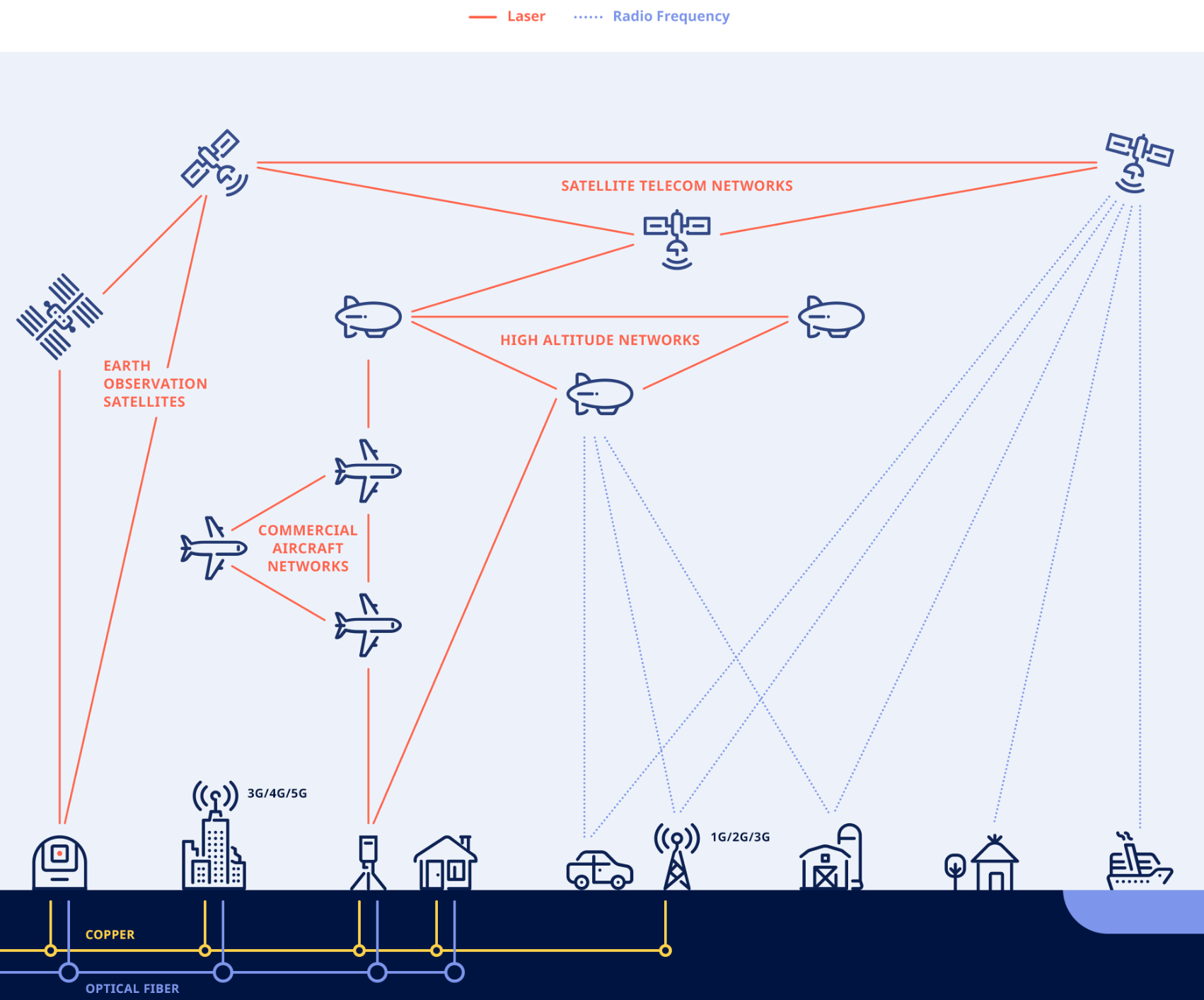3 Billions still without access to the internet. Here comes a possible solution!
The trouble with the way things work at the moment is that you need to lay fiber optic cables to increase network capacity and keep all the new devices data-connected. And that is really expensive. And really tricky. Why not beam it down from the skies or space? Makes life so much easier. And cheaper.
Laser terminals are placed on satellites, or drones – or even the plane you take to go on holiday – and send data to each other. Lots of data. And over really long distances. Really long.
And it is not just between two aircraft or two drones or two satellites but numerous. Hundreds, even thousands. This creates a network of flying objects all linked by laser communication and capable of delivering broadband internet to any place on earth no matter how remote. And it does all this without the need for optical fibers in the ground.

You know when you are sitting there waiting an age for Netflix to stop buffering and start again so you can see how Casablanca finishes because your broadband connection has been playing up a lot lately? Or when you go to your best friend’s wedding in the middle of nowhere and can’t access Facebook to post an embarrassing picture or video of the bride and groom because you can’t get any 3G signal? Well, laser communication puts a stop to all that.

In the fullyconnected world of cities and urban hubs serious concern is being raised about the ability of existing telecommunications infrastructure delivered through fiber optic cabling to cope with the exponential rise in the number of devices demanding connections to data and the ability of existing connections to operate securely.
In the developing world where there is a patchwork of connections, these are both unreliable and prohibitively expensive. By way of an example, in India, people on minimum wage would have to work 17 hours just to afford a monthly 500mb data plan that is three hours work to pay for a single hour of browsing. And this is only for access to email or basic, text
heavy websites and not streaming or content rich websites or services. This is, of course, provided the ground network is robust enough to deliver uninterrupted connections.
For the remaining three billion people for whom there is no internet access, the need to bring connectivity is even more pressing. A digital divide does not just mean a lack of streaming services or reliable access to email or YouTube; in areas where existing infrastructure has no noticeable penetration the problems are so stark that entire economies are at risk of being left behind as schools fail to adequately educate children, hospitals struggle to receive lifesaving medical services and information and as has been seen in the developed world even democratic and political participation suffers through lack of access to informed opinion and plurality.
Source: mynaric.com
I pray that every where there will be internet especially in our developing countries:)
Thanks for sharing
Congratulations @elschiless! You received a personal award!
You can view your badges on your Steem Board and compare to others on the Steem Ranking
Vote for @Steemitboard as a witness to get one more award and increased upvotes!